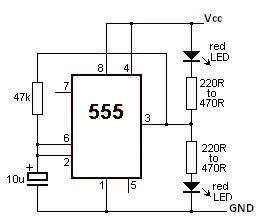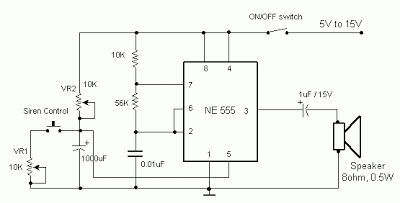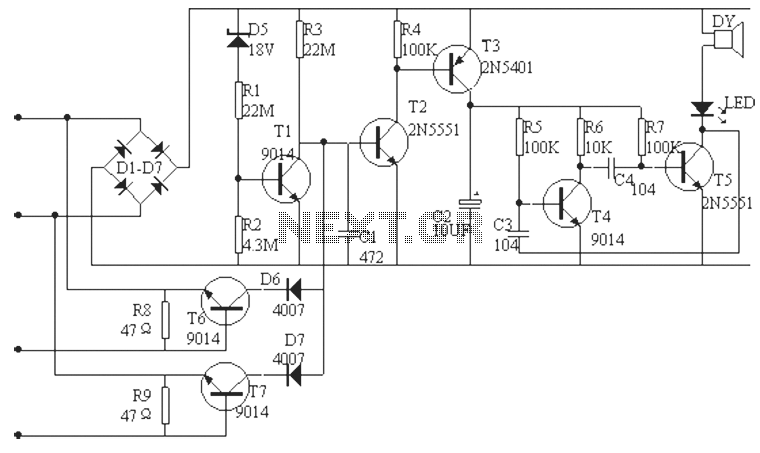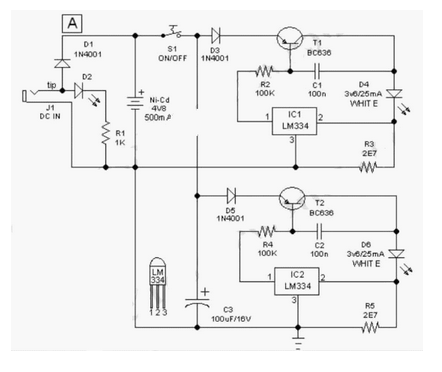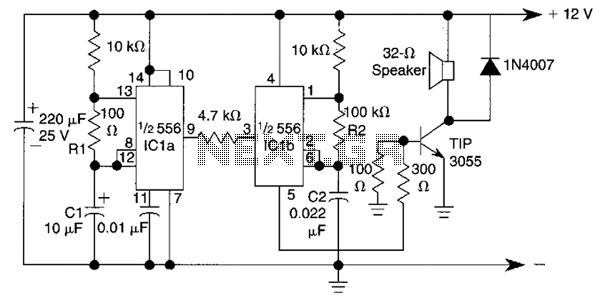
Rain Alarm Circuit-Science project with rain detector circuit-Working
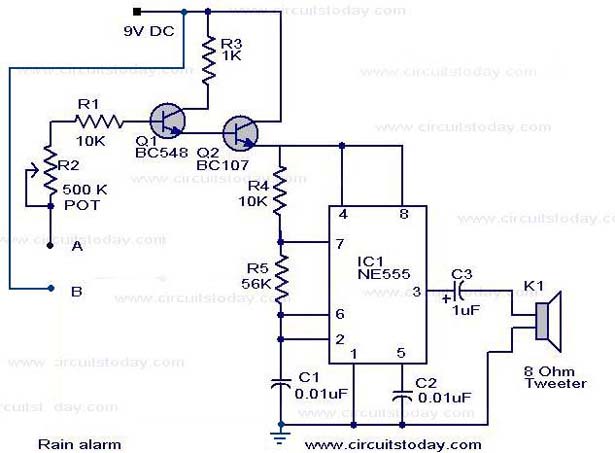
The operation of the rain alarm circuit is explained in detail. The rain alarm project is outlined along with a circuit diagram.
The rain alarm circuit is designed to detect the presence of rain and alert users through an audible or visual signal. The fundamental components of this circuit typically include a rain sensor, a microcontroller or comparator, a power supply, and an output mechanism such as a buzzer or LED.
The rain sensor is the primary element that detects moisture. It usually consists of two conductive plates that, when wet, allow current to flow between them. This change in conductivity can be monitored by the microcontroller or comparator, which processes the signal to determine whether rain is present.
When the sensor detects moisture, the microcontroller activates the output mechanism. This could be a buzzer that emits sound to alert the user or an LED that lights up to provide a visual indication of rain. The circuit may also include additional features such as adjustable sensitivity settings or a delay timer to prevent false alarms from brief rain showers.
Power supply considerations are crucial for the circuit's operation. A battery or a regulated power source is typically used to ensure that the circuit operates reliably under varying environmental conditions.
A schematic diagram of the rain alarm circuit will illustrate the connections between these components, showcasing how the sensor interfaces with the microcontroller and the output devices. Proper layout and component selection are essential for ensuring optimal performance and longevity of the circuit.The rain alarm circuit working is explained in detail. The rain alarm project is explained with circuit diagram.. 🔗 External reference
The rain alarm circuit is designed to detect the presence of rain and alert users through an audible or visual signal. The fundamental components of this circuit typically include a rain sensor, a microcontroller or comparator, a power supply, and an output mechanism such as a buzzer or LED.
The rain sensor is the primary element that detects moisture. It usually consists of two conductive plates that, when wet, allow current to flow between them. This change in conductivity can be monitored by the microcontroller or comparator, which processes the signal to determine whether rain is present.
When the sensor detects moisture, the microcontroller activates the output mechanism. This could be a buzzer that emits sound to alert the user or an LED that lights up to provide a visual indication of rain. The circuit may also include additional features such as adjustable sensitivity settings or a delay timer to prevent false alarms from brief rain showers.
Power supply considerations are crucial for the circuit's operation. A battery or a regulated power source is typically used to ensure that the circuit operates reliably under varying environmental conditions.
A schematic diagram of the rain alarm circuit will illustrate the connections between these components, showcasing how the sensor interfaces with the microcontroller and the output devices. Proper layout and component selection are essential for ensuring optimal performance and longevity of the circuit.The rain alarm circuit working is explained in detail. The rain alarm project is explained with circuit diagram.. 🔗 External reference
